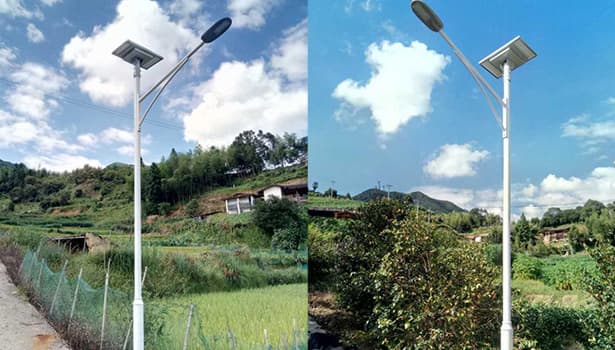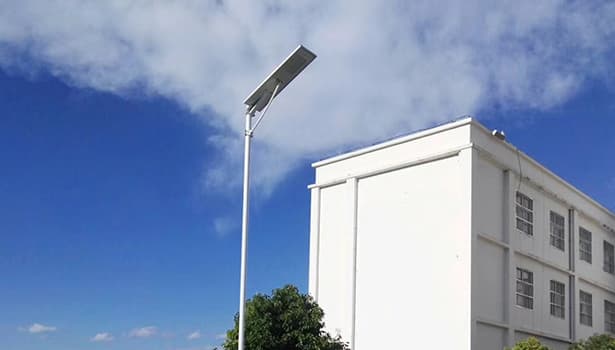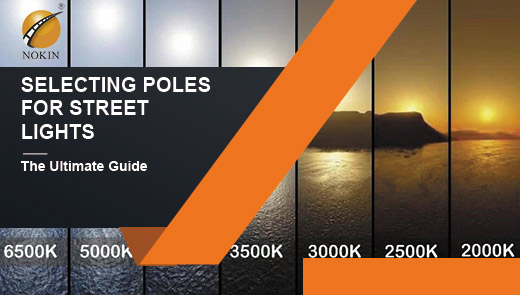Solar Street Light Components: How They Work Together?
Jan 08, 2025
Solar energy is an inexhaustible renewable energy source. It is also a clean and pollution-free green energy source. It has many advantages that conventional new energy sources do not have. It is one of the most important new energy sources in this century. With the continuous development of solar energy technology, solar energy has been applied to all aspects of our lives. In the outdoor lighting industry, solar street lights are chosen by more and more customers. They value the outstanding environmental benefits, economic benefits, and social benefits of solar LED street lights. In order to let more people understand solar powered street lights, let's analyze the composition of solar street lights in detail in this article.
.jpg)
When choosing the size and wattage of solar panels, consider the sunshine conditions in your location. If you are in an area with plenty of sunshine, you can use smaller panels, but in areas with less sunshine, choosing larger and higher-wattage panels is essential to ensure sufficient power generation.

Compared with traditional light sources, LED lights have higher light efficiency and more uniform light distribution, which can effectively reduce light pollution and provide safe and comfortable lighting for roads or places. When choosing solar powered street lights, the lumens and beam angles of LED light sources are customizable to meet the lighting needs of different environments.
Motion sensors are another game changer. By detecting motion, they activate the lights, saving energy when there is no activity. For example, in areas with less traffic, such as secluded park trails or small residential alleys, motion-activated lighting can save a lot of electricity. Sensitivity settings and detection ranges can be adjusted to suit specific environments, ensuring that the lights respond precisely when needed.


Understanding solar street light components is very important for you to choose the right lighting equipment for your project. Using solar LED street lights can effectively reduce carbon emissions, contribute to environmental protection and sustainable development, and, because solar powered street lights are off-grid lighting equipment, they can provide stable and reliable lighting for your streets and communities without being affected by grid failures. Therefore, whether you are a municipality that wants to upgrade the lighting system or a business that wants to contribute to sustainable development, solar powered outdoor street lights are a sustainable and efficient solution.
.jpg)
What are the components of solar street light?
Solar powered LED street lights are composed of multiple components that work together to generate electricity from sunlight, store electricity, and use electricity for lighting in an efficient way, lighting up streets, parks, and other areas. In order to achieve the best effect in the expected environment, there are many ways to configure each component, but the overall structure is the same.1. Solar panels
Solar panels are responsible for generating electricity for solar street lights. They collect sunlight during the day. The longer the direct sunlight is, the more energy is generated. However, with the development of technology, photovoltaic components can also achieve basic energy collection even in rainy weather. Solar panels are generally made of high-efficiency monocrystalline silicon or polycrystalline silicon, which have high photoelectric conversion efficiency and long service life.When choosing the size and wattage of solar panels, consider the sunshine conditions in your location. If you are in an area with plenty of sunshine, you can use smaller panels, but in areas with less sunshine, choosing larger and higher-wattage panels is essential to ensure sufficient power generation.
2. Energy storage device
The energy storage device is responsible for storing the electricity generated by the solar panels for nighttime lighting. Energy storage devices generally use lithium batteries or lithium iron phosphate batteries, which have high energy density, long service life, and good weather resistance. Estimating the battery capacity required for solar powered LED street lights depends on factors such as the required lighting time, the power consumption of the LEDs, and local weather conditions. The right size battery ensures that your lights can be on all night even on cloudy days.
3. LED light source
LED lights and solar energy are a perfect combination. Compared with traditional bulbs, LED lights have very low energy consumption, while they can provide plenty of bright light. LEDs naturally use direct current, without the need to convert power. Since this is the most efficient way to power LEDs, there is no need to oversize the system to handle the power losses associated with the inverter system.Compared with traditional light sources, LED lights have higher light efficiency and more uniform light distribution, which can effectively reduce light pollution and provide safe and comfortable lighting for roads or places. When choosing solar powered street lights, the lumens and beam angles of LED light sources are customizable to meet the lighting needs of different environments.
4. Control system and sensor
The controller is the "brain" of the solar powered outdoor street light. It is responsible for regulating the charge and discharge status of the battery panel and protecting the battery from overcharging or over-discharging. In addition, the controller can automatically adjust the switch and brightness of the light according to conditions such as ambient light intensity and time setting, thereby achieving energy saving and intelligent management.Motion sensors are another game changer. By detecting motion, they activate the lights, saving energy when there is no activity. For example, in areas with less traffic, such as secluded park trails or small residential alleys, motion-activated lighting can save a lot of electricity. Sensitivity settings and detection ranges can be adjusted to suit specific environments, ensuring that the lights respond precisely when needed.

How solar street lights work?
1. Charging during the day
When the sun rises, the solar panels begin to absorb sunlight and convert light energy into electrical energy. Through the management of the controller, the electric energy is efficiently stored in the battery, and the charging time will vary depending on the light intensity.2. Night lighting
When the ambient light becomes weak, the intelligent controller automatically turns on the LED lamps after detecting insufficient light to provide bright lighting. The battery powers the LED lamp, and a single charge usually supports 8-12 hours of continuous lighting, meeting the lighting needs of a whole night.
Understanding solar street light components is very important for you to choose the right lighting equipment for your project. Using solar LED street lights can effectively reduce carbon emissions, contribute to environmental protection and sustainable development, and, because solar powered street lights are off-grid lighting equipment, they can provide stable and reliable lighting for your streets and communities without being affected by grid failures. Therefore, whether you are a municipality that wants to upgrade the lighting system or a business that wants to contribute to sustainable development, solar powered outdoor street lights are a sustainable and efficient solution.




